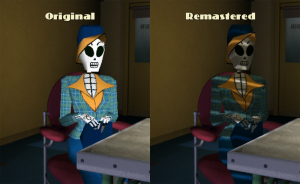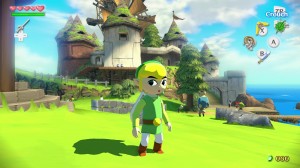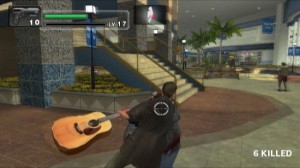All games are beautiful and perfect in their own right. The previous sentence was false but it served its duty as being an attention-grabber for the theme of this editorial: video game remakes. In a time where nearly every studio seems to either be remaking or revitalizing old franchises, it is only right to to look around and analyze what makes a successful video game remake.
The Legend of Zelda: The Wind Waker released on the Nintendo Gamecube in 2002 and its remake, The Legend of Zelda: The Wind Waker HD released on the Nintendo Wii U in 2014. What is interesting to note is the way in which the remake changed the base game, specifically, how it altered the third act where Link has to collect shards of the Triforce in order to defeat Ganon. In the original game, Link had to travel to different islands and find Trifoce charts that needed to be deciphered by Tingle on a separate island for a fee of 398 rupees, which means that the player would have had to find a wallet upgrade as the starting wallet can only hold 99 rupees at a time. Other changes were made such as the new lighting system and numerous gameplay changes to streamline actions for the player such as speeding up grappling animations and text speeds alongside the Swift Sail letting players move from island to island at approximately double the speed from the original game. Instead of radically changing the game, the developers kept what fans liked and fixed what fans disliked without being overly drastic about it. The two biggest complaints with the original were usually about the sailing and the Triforce shards and the remake addresses both, making it so that players can achieve their goals faster without having to go through content they disliked ten years ago. Overall, one can argue that The Legend of Zelda: The Wind Waker HD is a standard in which video game remakes can be held, while others will say that too much or not enough of the content has been changed to justify a fifty dollar price tag.

While the models are noticeably easier on the eyes and the lighting has changed, the art style remains intact.
Now, for a more of a bare-bones (pun intended) comparison, Grim Fandango Remastered came out on multiple platforms in January of 2014, while the original Grim Fandango was released all the way back in October of 1998. The remake was handled by Double Fine and really did not change much outside of the improved visuals and audio tracks. Of course, a more modern control scheme was implemented with the option to revert back to tank controls, and developed commentary was added along with concept art and achievements. However, aside from these changes it is very much the same game with no actual content changes, just the same games fans loved at the time with visuals suitable for the modern era of gaming. However, this did lead to criticism as some believed the original game’s puzzles to be too difficult to comprehend, which once again opens up the discussion on if it would have been right to change the core content of the game for a remake. It is easy to make the case that it ruins the nostalgia for gamers when they see their favorite games changed outside of visuals and music as gamers tend to mentally improve their memories already, while others argue that remakes are still games and should be subject to criticisms that would be given if it was not a remake.
Last, but certainly not least is the classic, Dead Rising: Chop Till You Drop on the Nintendo Wii, a remake of the original Dead Rising on the Xbox 360. Released only three years after the original, the remake comes with a smaller map, mini-games, the removal of jumping and picture-taking, reduced graphics, and the ability to render less zombies than the original title. All in all, a near perfect title, ensured to tickle even the most cold-hearted of gamer’s fancy.
Do you just video game remakes based on how well they have improved on the original game, or do you view them as standalone titles available to all forms of criticism? What is your favorite video game remake? Make sure to leave a comment below!

